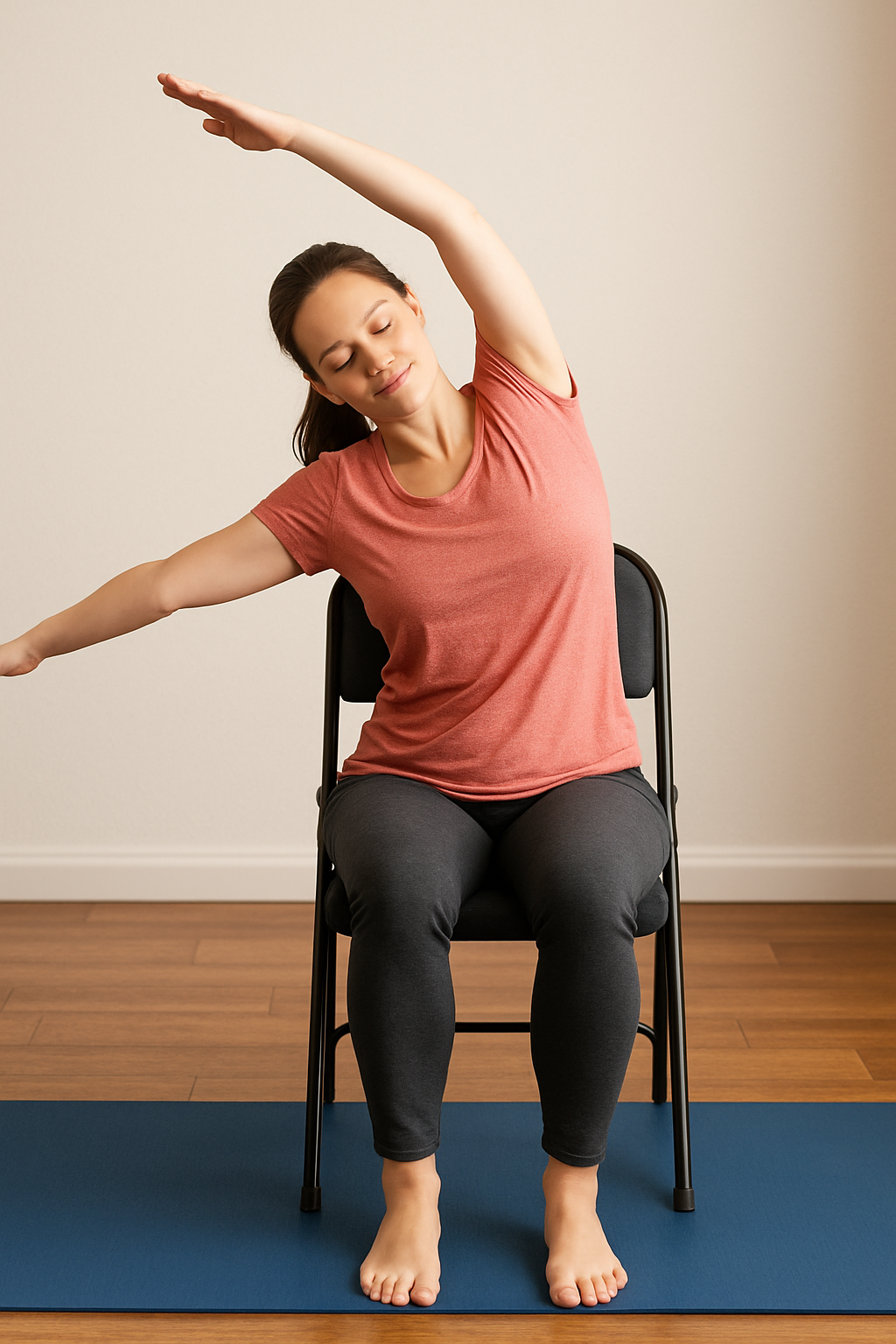Chair yoga offers a practical and accessible way for people of all ages, especially seniors, to maintain flexibility, improve mobility, and reduce stiffness without needing to leave their seat. Free chair yoga exercises provide simple, safe routines that can be done at home using just a chair, making them ideal for beginners and those with limited mobility. These exercises help enhance physical and mental well-being with minimal risk of injury.
Many free resources are available in printable PDF formats, offering step-by-step guidance on effective poses designed to boost balance, core strength, and relaxation. They often include short daily sequences that require only a few minutes, making it easy to incorporate chair yoga into a regular routine.
This approach emphasizes gentle movements that accommodate varying fitness levels, allowing individuals to practice independently or with minimal instruction. Chair yoga creates an inclusive environment for staying active while supporting overall health through consistent, manageable exercise.
Essential Free Chair Yoga Exercises
Chair yoga offers simple yet effective movements to improve posture, flexibility, and spinal mobility. These exercises can be performed safely while seated, requiring no special equipment other than a sturdy chair.
Seated Mountain Pose
The Seated Mountain Pose helps establish a strong, balanced posture while seated. The person sits tall with feet flat on the floor, hips centered over the knees, and spine elongated. Shoulders relax downward, and the head aligns over the torso.
Arms rest comfortably at the sides or on the thighs, palms facing down or together. This pose encourages mindful breathing and body awareness, which can reduce tension and improve posture.
Holding the pose for 1-3 minutes allows the practitioner to focus on deep, steady breaths, aiding relaxation and enhancing core engagement.
Chair Cat-Cow Stretch
The Chair Cat-Cow Stretch improves spinal flexibility and relief from stiffness. Starting seated upright, the individual inhales while arching the back and lifting the chest forward and up, creating the “Cow” posture.
On the exhale, the spine rounds, the chin tucks toward the chest, and the shoulders curve forward, forming the “Cat” posture. Repeating this sequence 5 to 10 times promotes mobility and can reduce back tension.
This exercise is gentle enough for most fitness levels and supports better breathing and circulation through coordinated movement.
Seated Forward Bend
The Seated Forward Bend targets the lower back and hamstrings, providing gentle stretching. From a tall seated position, the person exhales and leans forward slowly, hinging at the hips while keeping the back as straight as possible.
Hands may reach toward the feet, shins, or knees depending on flexibility. Holding the stretch for 15 to 30 seconds helps release lower back tension and improves leg flexibility.
It is important to avoid forcing the stretch, maintaining comfort throughout. This pose enhances circulation and calms the nervous system.
Tips for Practicing Chair Yoga Safely
Successful chair yoga practice depends on using appropriate equipment and applying proper breathing methods. These factors help prevent injury and maximize the benefits of the exercises.
Choosing the Right Chair
Selecting a chair that provides stability and support is essential. The chair should have a sturdy frame and a flat seat without wheels. Chairs with armrests can offer additional balance and help during transitions between movements.
The height of the chair matters. Feet should rest flat on the floor, with knees at a right angle or slightly lower. This positioning prevents strain on the lower back and encourages proper posture throughout the routine.
Soft or overly cushioned chairs can cause instability. Firm seating allows better control and reduces the risk of slipping. Avoid chairs that rock or swivel, as they can compromise balance during exercises.
Proper Breathing Techniques
Breathing steadily and deeply is crucial to optimize relaxation and movement control. Inhale slowly through the nose, filling the lungs completely. Exhale gently through the mouth or nose, emptying the lungs fully.
Maintaining a calm, rhythmic breathing pattern supports oxygen flow to muscles and reduces tension. Holding breath during poses should be avoided to prevent dizziness or lightheadedness.
Breathing can also be coordinated with movement. For example, inhale when lengthening the spine or opening the chest, and exhale when folding forward or relaxing into a pose. This enhances focus and effectiveness of each exercise.


